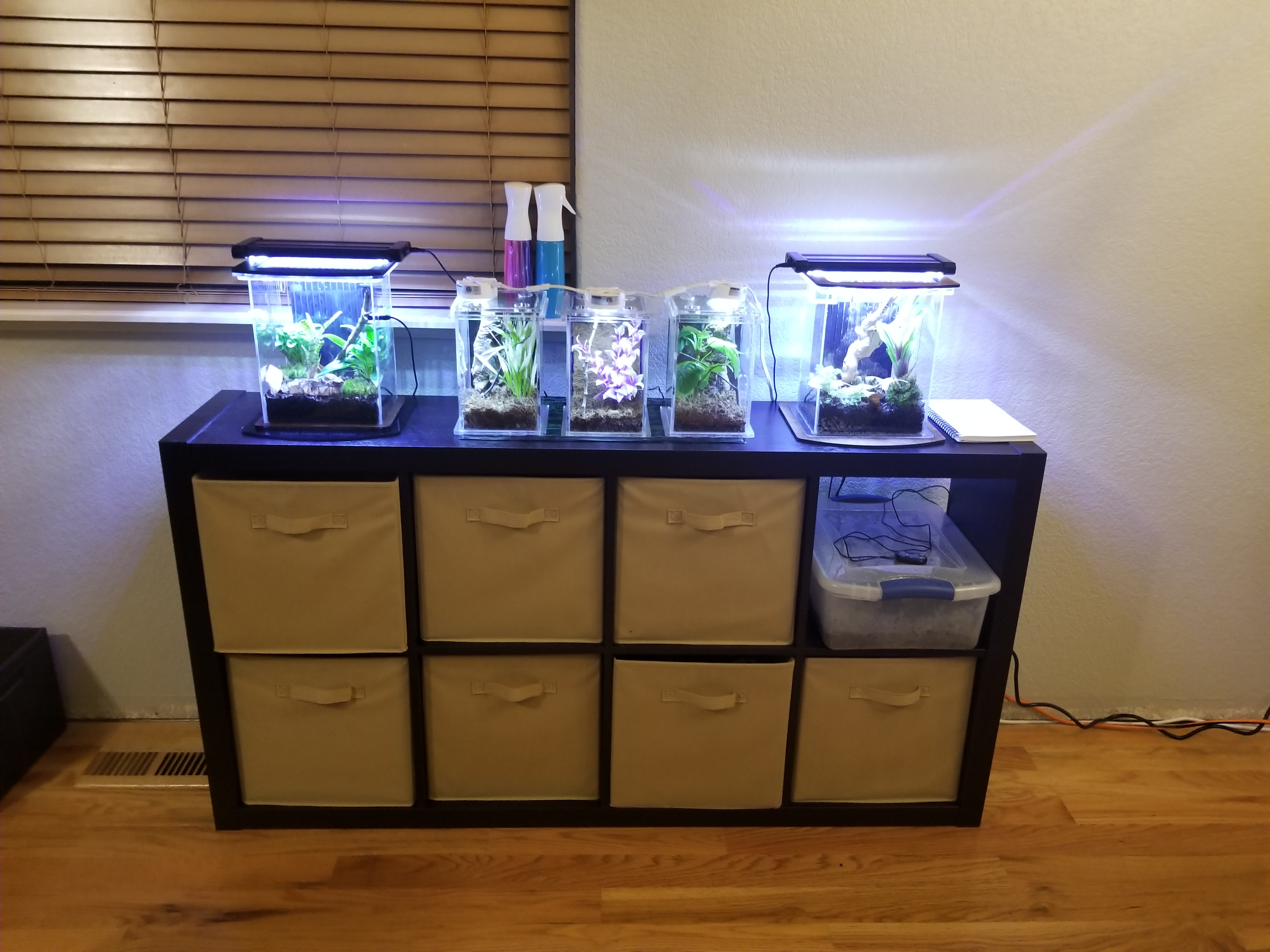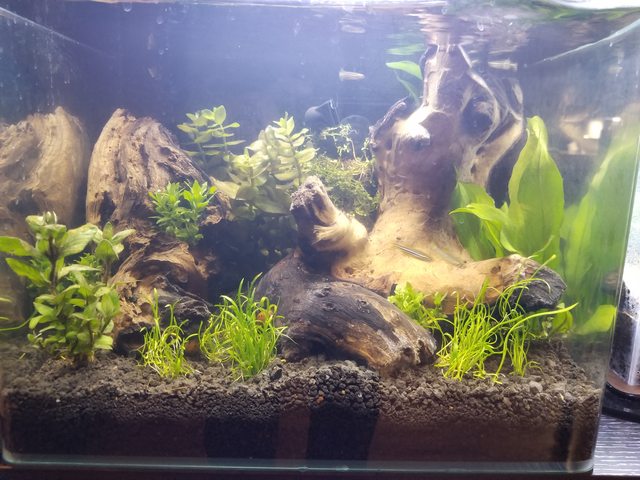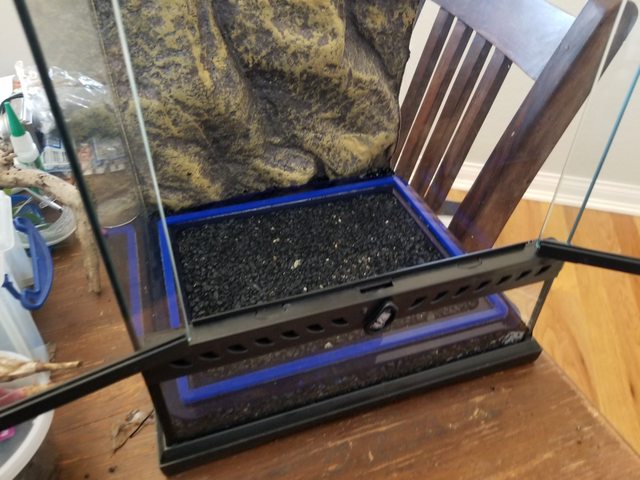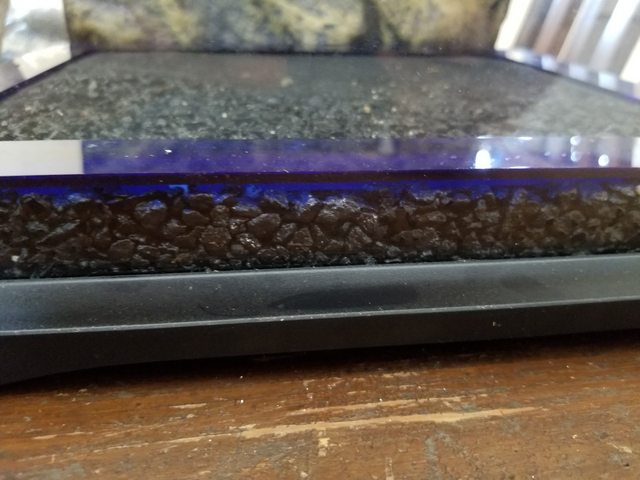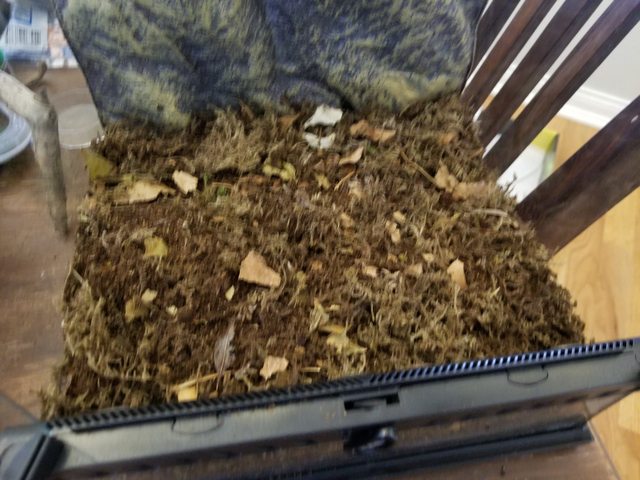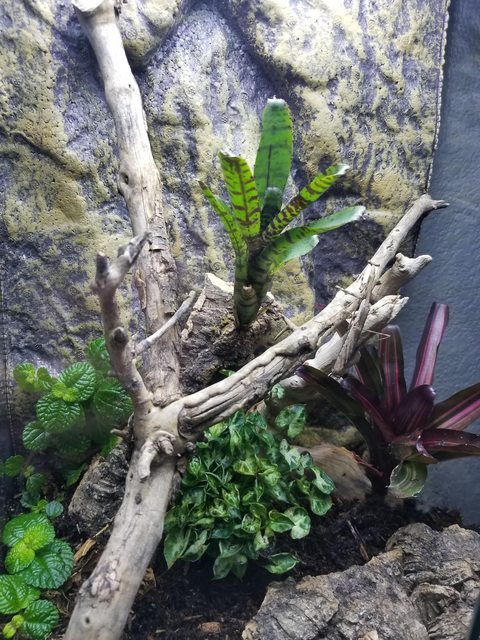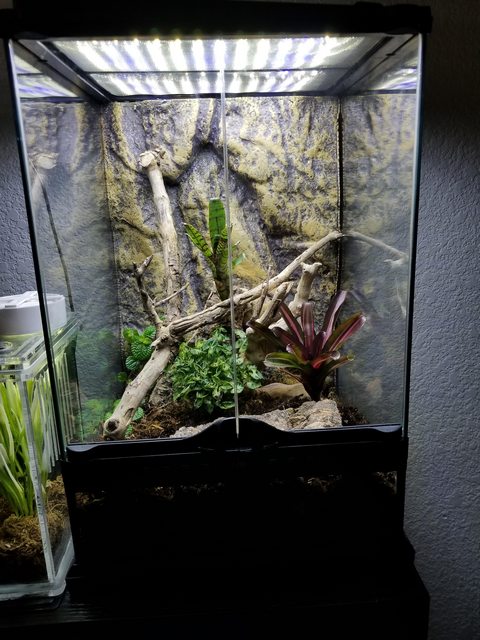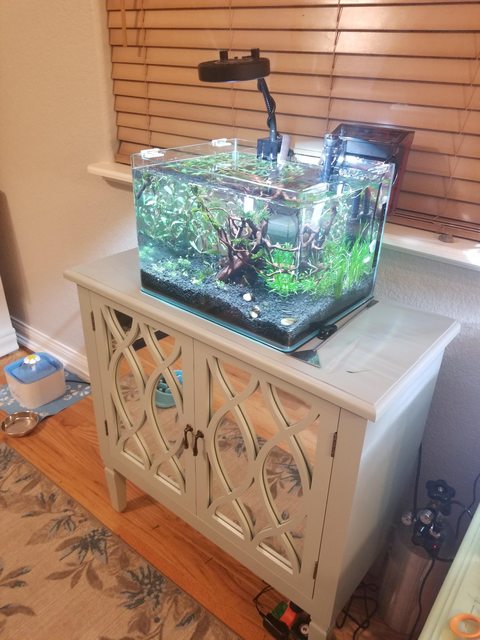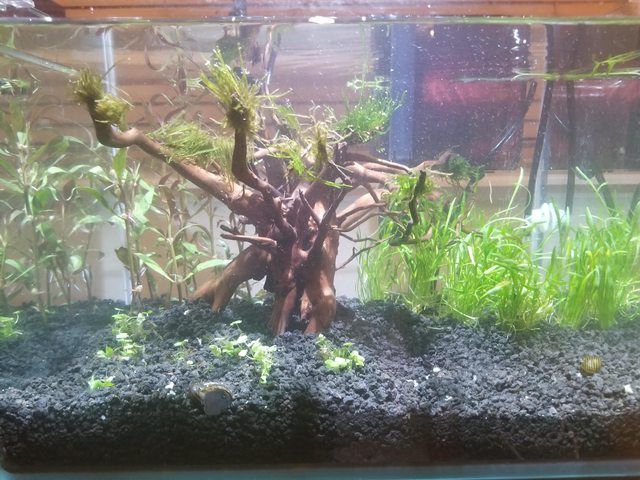Upgraded to now have an overkill vivarium for one of my mantises.
Long story long... I am wanting to start a small A. Vulgare (isopod) breeding project. That got me to thinking I really wish I had a good display for my isopods. For isopods, floor space is the name of the game. You only really need 1" of substrate and then only enough headroom to allow them to not escape. So I was thinking about building them custom vivariums. But also one mantis already died and another only has maybe 1 month left. We want to keep fewer mantises to help the time it takes to feed, so we were going to be tearing down the vivariums. With all of the animals, our house has become a zoo and we have to spend about 1/2 of our free time caring for the animals. I want 1 good display vivarium, 1 good display aquarium, the cat, the guinea pigs, and supplemental isopod and springtail cultures (the wife has her eyes on a dog in the next year as well as chickens......). No more roaches, and not 5 mantises in display-style containers. I really love the vivarium plants though, and want to keep them. We have never had success keeping houseplants, and vivarium plants add an extra little bit of flair.
So, I decided to get a larger vivarium to put all of the plants in, and also to keep one colony of isopods. Side benefit for Courage, our peacock mantis, he gets a huge new home. Finally, I thought it was wiser to spend $60 on a vivarium that I could use for millipedes, stick bugs, mantids, frogs, etc rather than spend a weekend of time and $30 in acrylic to build custom isopod enclosures. More than being mantis-lovers we are animal lovers so it will be nice to have some flexibility.
Here it is. I am happy with it so far. It is a 12x12x18" Exo-terra. Luckily, the old LED light fixtures fit it ok, but I also got lucky and found the hood for it for $3 at a thrift store so I have options.
As always, started with a drainage layer. This keeps the substrate from getting soaked if I over water. I had an acrylic frame and mesh that fit perfectly to keep the soil and drainage layer from mixing too much. I used aquarium gravel, which is not ideal for this due to weight.
Then the substrate. Mixed some Josh's Frogs isopod substrate with some coconut fiber, sphagnum moss, crumbled leaves, and charcoal. This is important for the isopods since it is their home and thier food. If it doesn't have enough leaf matter to eat, they won't produce well. If it stays too moist or dries out too fast, same thing. It also needed to be decent for the plants, but the rooting plants had some invertebrate-safe potting soil stuck to the roots and I left that alone. Sorry for the blurry photo.
Then the plants.
Finally I put in the isopods. I would guess 7 adult giant canyon isopods and some 100+ small juveniles. They took a few months to begin producing, but now are birthing huge sets of young. I kept about 1/2 of the juveniles in a separate culture just in case something goes wrong. These guys grow sooooo slowly. I originally thought the young were dwarf whites that got into the culture because they were similar color or size. It has taken 1-2 months for any real color to show up on the young. I believe it will be another 3-6 months until they are sexually mature. But once that happens, I will have a nice big colony so I can start selling/sharing. Giant canyons are not the most attractive, but I have a fondness for them.
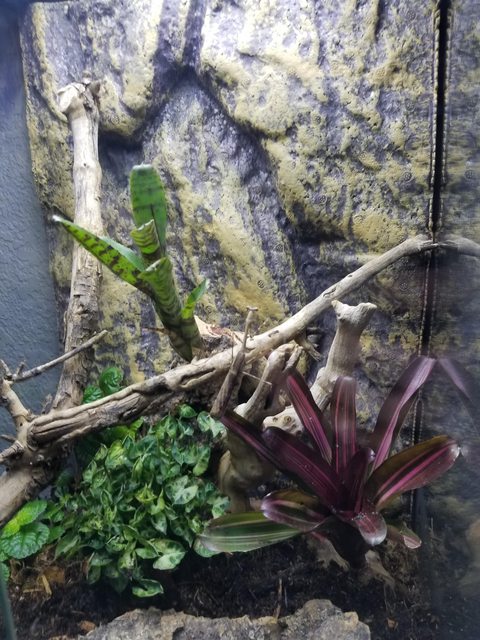
We put Courage in this enclosure since he is too cowardly to hunt down the isopods. Carl, our h. majuscula, ate most of the giant canyons in his vivarium within 1 month. Courage on the other hand, he won't eat a cricket 2 inches from his face. I doubt he will actively hunt them. One concern is that I would like to pin him once he passes. The isopods may start in on him if we don't catch it soon enough. I may make a net to catch him to prevent that. No springtails in this setup unless some managed to sneak in. They are only helpful and we have a culture on hand, but I want to see if the isopods do well enough on their own.
